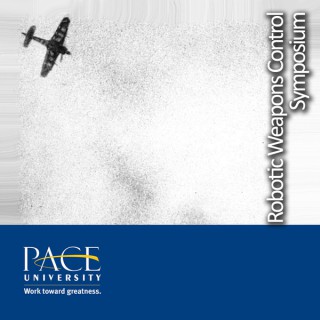
Robotic Weapons Control Symposium
Follow Robotic Weapons Control SymposiumOn 5 June 2013, scholars from Pace University and beyond joined this debate with a 'Robotic Weapons Control Symposium' at the Downtown Campus, organized by the Political Science department in the Dyson College of Arts and Sciences, funded by a Thinkfinity Grant from the Verizon Foundation, in partne…
- Jun 5, 2013 LATEST EPISODE
- infrequent NEW EPISODES
- 17m AVG DURATION
- 7 EPISODES
More podcasts from Pace University
Latest episodes from Robotic Weapons Control Symposium

In this presentation from the 2013 Robotic Weapons Control Symposium at Pace University in New York City, Cassandra Stimpson uses scapegoating theory to examine the dynamics of extrajudicial killings

In this presentation from the 2013 Robotic Weapons Control Symposium at Pace University in New York City, Pace University student Cayman Mitchell critiques the notion that autonomous armed robots might be capable of ethics.

In this presentation from the 2013 Robotic Weapons Control Symposium at Pace University in New York City, Dr. Michal Klincewicz of Pace University and Humboldt University uses the "frame problem" to explore the potential dangers of fully-autonomous armed robots.

In this presentation from the 2013 Robotic Weapons Control Symposium at Pace University in New York City, Dr Paul Benjamin of Pace University's Seidenburg School of Computer Science and Information Systems talks about the ethical and social responsibility of roboticists, particularly in the context of military weapons development.

In this presentation from the 2013 Robotic Weapons Control Symposium at Pace University, Pace Law School Professor Thomas McDonnell examines the implications of the use of drones for extrajudicial killings for the laws of war.

In this presentation from the 2013 Robotic Weapons Control Symposium at Pace University in New York City, Dr. Illah Nourbakhsh of Carnegie Mellon's Robotics Lab talks about the ethical and social responsibility of roboticists, particularly in the context of military weapons development.

In this presentation from the 2013 Robotic Weapons Control Symposium at Pace University in New York City, Matthew Bolton, Ph.D., uses the transformation of weapons technologies such as landmines and 'killer robots' to examine the changing spatial dynamics of armed conflict.

















